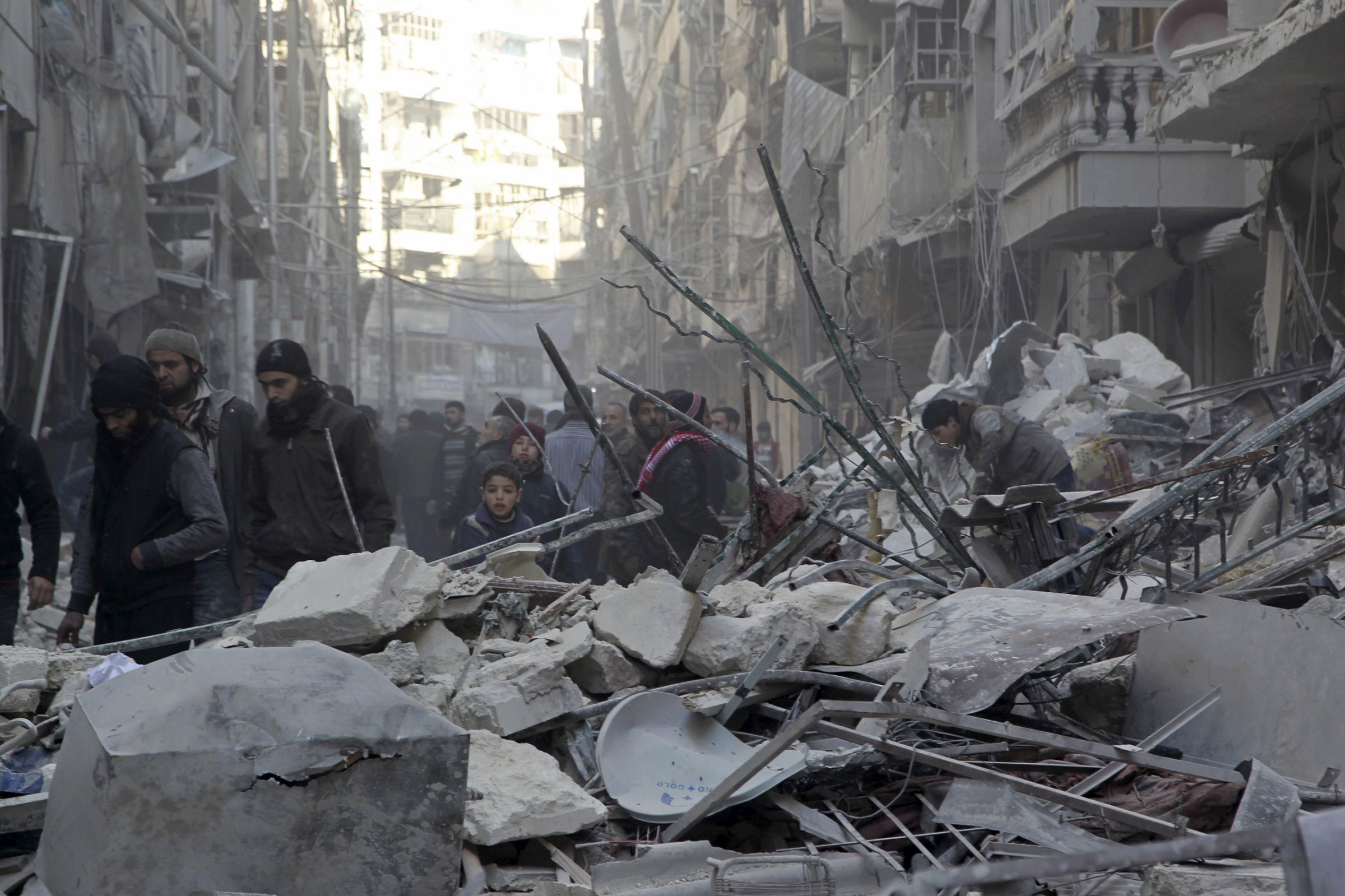
The Syrian civil war reached a turning point last week when forces loyal to the regime of president Bashar Assad cut a key supply line into the rebel-held city of Aleppo, imperiling one of the key strongholds of the nearly five-year-old rebellion.
Further advances by the regime and allied militias could place Aleppo under siege, striking a potentially crushing blow for the insurrection that began a series of unarmed protests against Assad’s authoritarian regime in February 2011 and later metastasized into a civil conflict that left more than a quarter million Syrians dead.
The Russian air force, which has supported the regime’s offensive against the rebels since October 2015, has intensified air strikes in the Aleppo area over the past week. Fearing a siege of the city, tens of thousands of civilians fled Aleppo last week, the latest exodus from a city already devastated by years of shelling, including often indiscriminate bombardment by government forces. Turkish Prime Minister Ahmet Davutoglu said on Thursday that as many as 70,000 new refugees are headed toward Turkey from Aleppo.
Aleppo was once Syria’s largest city and its commercial capital and is now a key redoubt of the mainstream and Islamist rebels opposed to the regime. The fall of the city could irreversibly alter the dynamics of the war. The rebels’ loss of Aleppo would also empower extremist groups including ISIS, transforming the conflict into a largely binary conflict between the regime and the jihadists.
“What is happening right now is that third option that we’ve constantly been trying to amplify and say, ‘This is here, there is a third option,’ and it’s the actual option that the majority of the population support. That option is now being crushed,” said Rami Jarrah, an activist who recently left Aleppo after producing a series of video reports documenting the offensive by the regime and Russian forces.
The regime breakthrough came on Feb. 2 when pro-Assad forces broke a rebel-imposed siege on two predominantly Shi‘ite towns north of Aleppo, Nubul and Zahraa. During the same push, regime forces cut the northern route from Aleppo to the border with Turkey, a country that supports anti-Assad rebels. One supply route into the city remains, leading from Aleppo to the city of Idlib.
The regime’s advances in the Aleppo areas were in part the product of four months of bombardment of rebel areas by Russian warplanes. Launched in late September 2015, the air campaign helped reverse the tide of the fighting after months in which Assad’s forces lost ground in key areas. The regime is also backed by Iranian troops and predominantly Shi‘ite militia fighters from Iran, Iraq and Afghanistan.
Kurdish forces have also made advances in the Aleppo area in recent days. Kurdish armed groups receive support in the U.S. in their battle against ISIS, but their advance underscores tensions between Kurdish paramilitaries and the armed groups that grew out of the anti-Assad rebellion.
The Russian-backed regime offensive has focused on mainstream and Islamist armed groups who are opposed to both Assad and ISIS, frequently fighting both foes at once. Activists monitoring developments in Aleppo say rebel forces have pulled back from fronts where they had been fighting ISIS in order to reinforce the lines against the regime.
More than 300,000 people are thought to remain in Aleppo. If the government surrounds the city, activists say it could be the most devastating of a series of blockades imposed on rebel areas across the country. According to the U.N., as many as a half-million people are living in 18 areas under siege by government forces and ISIS.
The ongoing sieges have produced some of the most horrific scenes from the Syrian conflict, of emaciated civilians starving to death. But the prospect of a siege in Aleppo raises the possibility of starvation on a scale not seen elsewhere in the country. Residents of the city say the price of bread and fuel has more than doubled over the past two weeks. Those who are not fleeing are making preparations for a siege.
Mahmoud Rashwani, an activist in Aleppo, described a sense of despair as residents of the city feel abandoned by the international community. He wrote in a text message, “People have the feeling that the international community, especially the ‘friends of Syria,’ has left the Syrian people to be killed and they are accomplice with the obvious enemy (Russia, Iran and Assad regime.)”
More Must-Reads From TIME
- The 100 Most Influential People of 2024
- The Revolution of Yulia Navalnaya
- 6 Compliments That Land Every Time
- What's the Deal With the Bitcoin Halving?
- If You're Dating Right Now , You're Brave: Column
- The AI That Could Heal a Divided Internet
- Fallout Is a Brilliant Model for the Future of Video Game Adaptations
- Want Weekly Recs on What to Watch, Read, and More? Sign Up for Worth Your Time
Contact us at letters@time.com